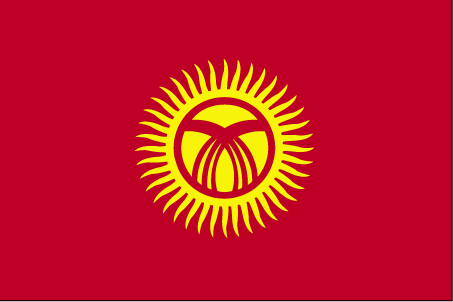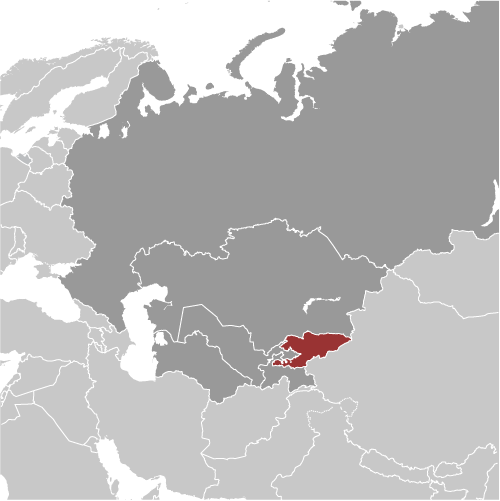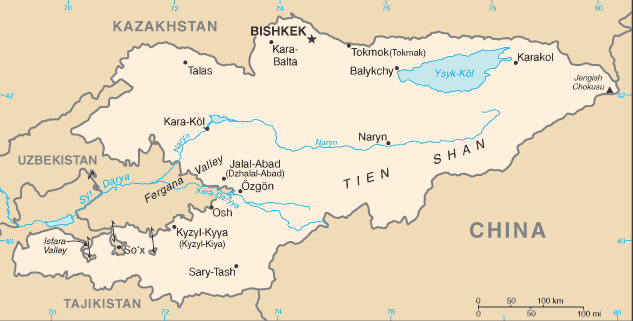|
Economy - overview:
|

|
|
Kyrgyzstan is a poor, mountainous country with a dominant agricultural sector. Cotton, tobacco, wool, and meat are the main agricultural products, although only tobacco and cotton are exported in any quantity. Industrial exports include gold, mercury, uranium, natural gas, and electricity. The economy depends heavily on gold exports - mainly from output at the Kumtor gold mine - and on remittances from Kyrgyzstani migrant workers priimarily in Russia. Following independence, Kyrgyzstan was progressive in carrying out market reforms, such as an improved regulatory system and land reform. Kyrgyzstan was the first Commonwealth of Independent States (CIS) country to be accepted into the World Trade Organization. Much of the government's stock in enterprises has been sold. Drops in production had been severe after the breakup of the Soviet Union in December 1991, but by mid-1995, production began to recover and exports began to increase. In 2005, the BAKIEV government and international financial institutions initiated a comprehensive medium-term poverty reduction and economic growth strategy. The government made steady strides in controlling its substantial fiscal deficit, nearly closing the gap between revenues and expenditures in 2006, before boosting expenditures more than 20% in 2007-08. GDP grew about 8% annually in 2007-08, partly due to higher gold prices internationally, but slowed to 2.9% in 2009. The overthrow of President BAKIEV in April 2010 and subsequent ethnic clashes left hundreds dead and damaged infrastructure. Shrinking trade and agricultural production, as well as the political instability caused by the change in government, caused GDP to contract 0.5% in 2010. The fiscal deficit widened to 11% of GDP in 2010, reflecting significant increases in crisis-related spending, including both rehabilitation of damaged infrastructure and bank recapitalization. The economy grew 5.7% in 2011, but slowed to around 1% in 2012, primarily due to an 83% decrease in production from Kumtor. As a result, the budget deficit increased at year's end. Progress in fighting corruption, improving transparency in licensing, business permits and taxations, restructuring domestic industry, and attracting foreign aid and investment are key to future growth.
|
|
|
GDP (purchasing power parity):
|

|
|
$13.47 billion (2012 est.)
country comparison to the world: 145
$13.34 billion (2011 est.)
$12.62 billion (2010 est.)
note:
data are in 2012 US dollars
|
|
|
GDP (official exchange rate):
|

|
|
$6.197 billion (2012 est.)
|
|
|
GDP - real growth rate:
|

|
|
1% (2012 est.)
country comparison to the world: 161
5.7% (2011 est.)
-0.5% (2010 est.)
|
|
|
GDP - per capita (PPP):
|

|
|
$2,400 (2012 est.)
country comparison to the world: 185
$2,400 (2011 est.)
$2,300 (2010 est.)
note:
data are in 2012 US dollars
|
|
|
GDP - composition by sector:
|

|
|
agriculture: 20.2%
industry:
27.3%
services:
52.5% (2012 est.)
|
|
|
Labor force:
|

|
|
2.344 million (2007)
country comparison to the world: 115
|
|
|
Labor force - by occupation:
|

|
|
agriculture: 48%
industry:
12.5%
services:
39.5% (2005 est.)
|
|
|
Unemployment rate:
|

|
|
8.6% (2011 est.)
country comparison to the world: 99
18% (2004 est.)
|
|
|
Population below poverty line:
|

|
|
33.7% (2011 est.)
|
|
|
Household income or consumption by percentage share:
|

|
|
lowest 10%: 2.8%
highest 10%:
27.8% (2009 est.)
|
|
|
Distribution of family income - Gini index:
|

|
|
33.4 (2007)
country comparison to the world: 96
29 (2001)
|
|
|
Investment (gross fixed):
|

|
|
25.2% of GDP (2012 est.)
country comparison to the world: 48
|
|
|
Budget:
|

|
|
revenues: $1.741 billion
expenditures:
$2.223 billion (2012 est.)
|
|
|
Taxes and other revenues:
|

|
|
28.1% of GDP (2012 est.)
country comparison to the world: 107
|
|
|
Budget surplus (+) or deficit (-):
|

|
|
-7.8% of GDP (2012 est.)
country comparison to the world: 195
|
|
|
Inflation rate (consumer prices):
|

|
|
4% (2012 est.)
country comparison to the world: 112
16.6% (2011 est.)
|
|
|
Central bank discount rate:
|

|
|
13.73% (22 December 2011 est.)
country comparison to the world: 109
2.5% (31 December 2010 est.)
|
|
|
Commercial bank prime lending rate:
|

|
|
28.5% (31 December 2012 est.)
country comparison to the world: 4
34.07% (31 December 2011 est.)
|
|
|
Stock of narrow money:
|

|
|
$1.33 billion (31 December 2012 est.)
country comparison to the world: 138
$1.363 billion (31 December 2011 est.)
|
|
|
Stock of broad money:
|

|
|
$1.952 billion (31 December 2012 est.)
country comparison to the world: 151
$1.654 billion (31 December 2011 est.)
|
|
|
Stock of domestic credit:
|

|
|
$897.1 million (31 December 2012 est.)
country comparison to the world: 162
$759.5 million (31 December 2011 est.)
|
|
|
Market value of publicly traded shares:
|

|
|
$165 million (31 December 2011)
country comparison to the world: 115
$79 million (31 December 2010)
$71.84 million (31 December 2009)
|
|
|
Agriculture - products:
|

|
|
tobacco, cotton, potatoes, vegetables, grapes, fruits and berries; sheep, goats, cattle, wool
|
|
|
Industries:
|

|
|
small machinery, textiles, food processing, cement, shoes, sawn logs, refrigerators, furniture, electric motors, gold, rare earth metals
|
|
|
Industrial production growth rate:
|

|
|
10% (2011 est.)
country comparison to the world: 13
|
|
|
Current account balance:
|

|
|
-$546.3 million (2012 est.)
country comparison to the world: 97
-$252.4 million (2011 est.)
|
|
|
Exports:
|

|
|
$2.294 billion (2012 est.)
country comparison to the world: 139
$2.331 billion (2011 est.)
|
|
|
Exports - commodities:
|

|
|
gold, cotton, wool, garments, meat, tobacco; mercury, uranium, hydropower; machinery; shoes
|
|
|
Exports - partners:
|

|
|
Uzbekistan 25.3%, Russia 22.1%, Kazakhstan 20.1%, China 7.8%, UAE 5.5%, Afghanistan 5%, Turkey 4.2% (2011)
|
|
|
Imports:
|

|
|
$4.272 billion (2012 est.)
country comparison to the world: 136
$3.959 billion (2011 est.)
|
|
|
Imports - commodities:
|

|
|
oil and gas, machinery and equipment, chemicals, foodstuffs
|
|
|
Imports - partners:
|

|
|
China 59.7%, Russia 13.9%, Kazakhstan 5.2% (2011)
|
|
|
Reserves of foreign exchange and gold:
|

|
|
$2.164 billion (31 December 2012 est.)
country comparison to the world: 121
$1.835 billion (31 December 2011 est.)
|
|
|
Debt - external:
|

|
|
$3.666 billion (31 December 2012 est.)
country comparison to the world: 129
$3.602 billion (31 December 2011 est.)
|
|
|
Stock of direct foreign investment - at home:
|

|
|
$1.669 billion (31 December 2012 est.)
country comparison to the world: 94
$1.409 billion (31 December 2011 est.)
|
|
|
Stock of direct foreign investment - abroad:
|

|
|
$1.5 million (31 December 2012 est.)
country comparison to the world: 91
$1.5 million (31 December 2011 est.)
|
|
|
Exchange rates:
|

|
|
soms (KGS) per US dollar -
47.33 (2012 est.)
46.144 (2011 est.)
45.964 (2010 est.)
42.905 (2009)
36.108 (2008)
|
|
|
Fiscal year:
|

|
|
calendar year
|
|
|
|





 )
)



